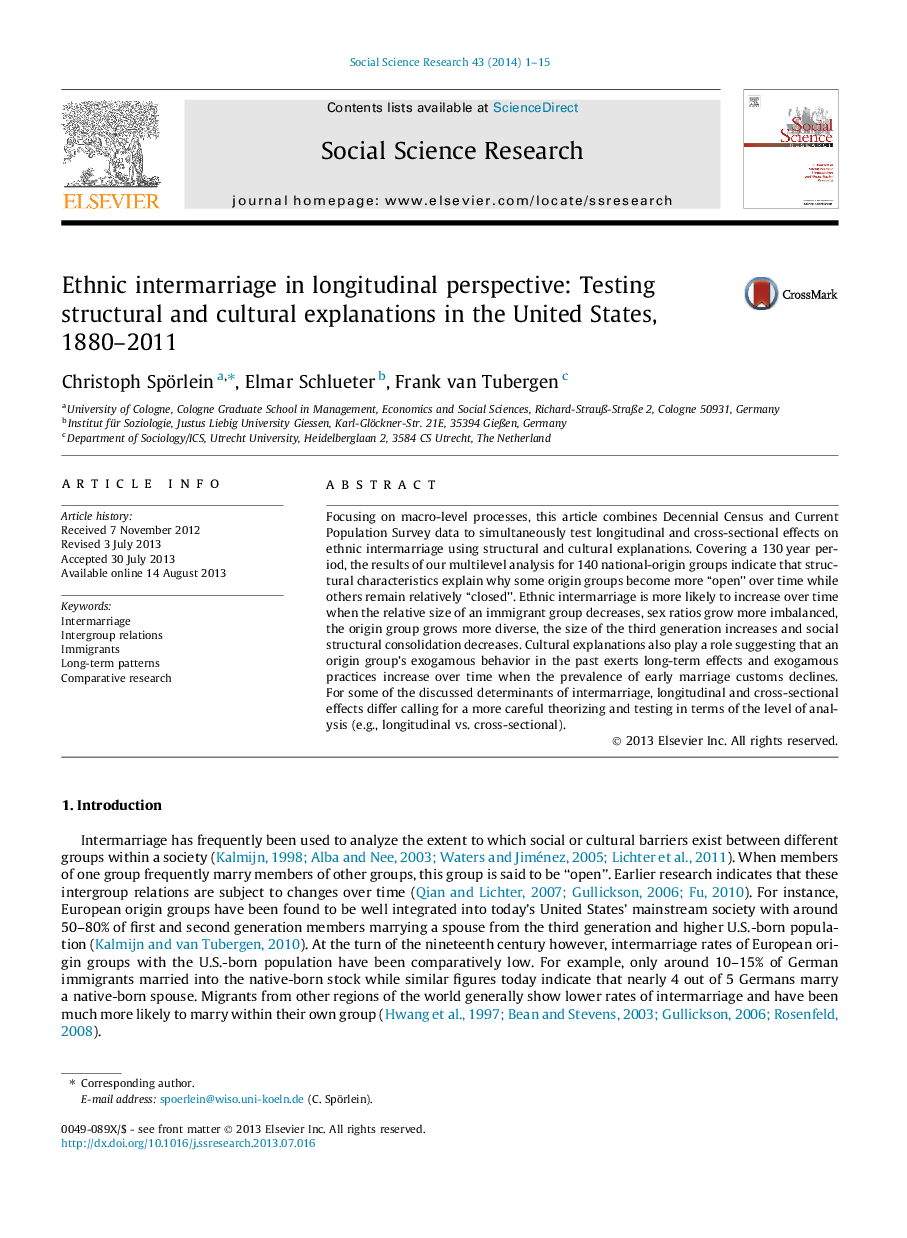| Article ID | Journal | Published Year | Pages | File Type |
|---|---|---|---|---|
| 955828 | Social Science Research | 2014 | 15 Pages |
•We simultaneously model cross-sectional and longitudinal differences in intermarriage.•Over time, intermarriage increases when structural conditions support intergroup contact.•Intermarriage also increase when third-party influence declines over time.
Focusing on macro-level processes, this article combines Decennial Census and Current Population Survey data to simultaneously test longitudinal and cross-sectional effects on ethnic intermarriage using structural and cultural explanations. Covering a 130 year period, the results of our multilevel analysis for 140 national-origin groups indicate that structural characteristics explain why some origin groups become more “open” over time while others remain relatively “closed”. Ethnic intermarriage is more likely to increase over time when the relative size of an immigrant group decreases, sex ratios grow more imbalanced, the origin group grows more diverse, the size of the third generation increases and social structural consolidation decreases. Cultural explanations also play a role suggesting that an origin group’s exogamous behavior in the past exerts long-term effects and exogamous practices increase over time when the prevalence of early marriage customs declines. For some of the discussed determinants of intermarriage, longitudinal and cross-sectional effects differ calling for a more careful theorizing and testing in terms of the level of analysis (e.g., longitudinal vs. cross-sectional).
